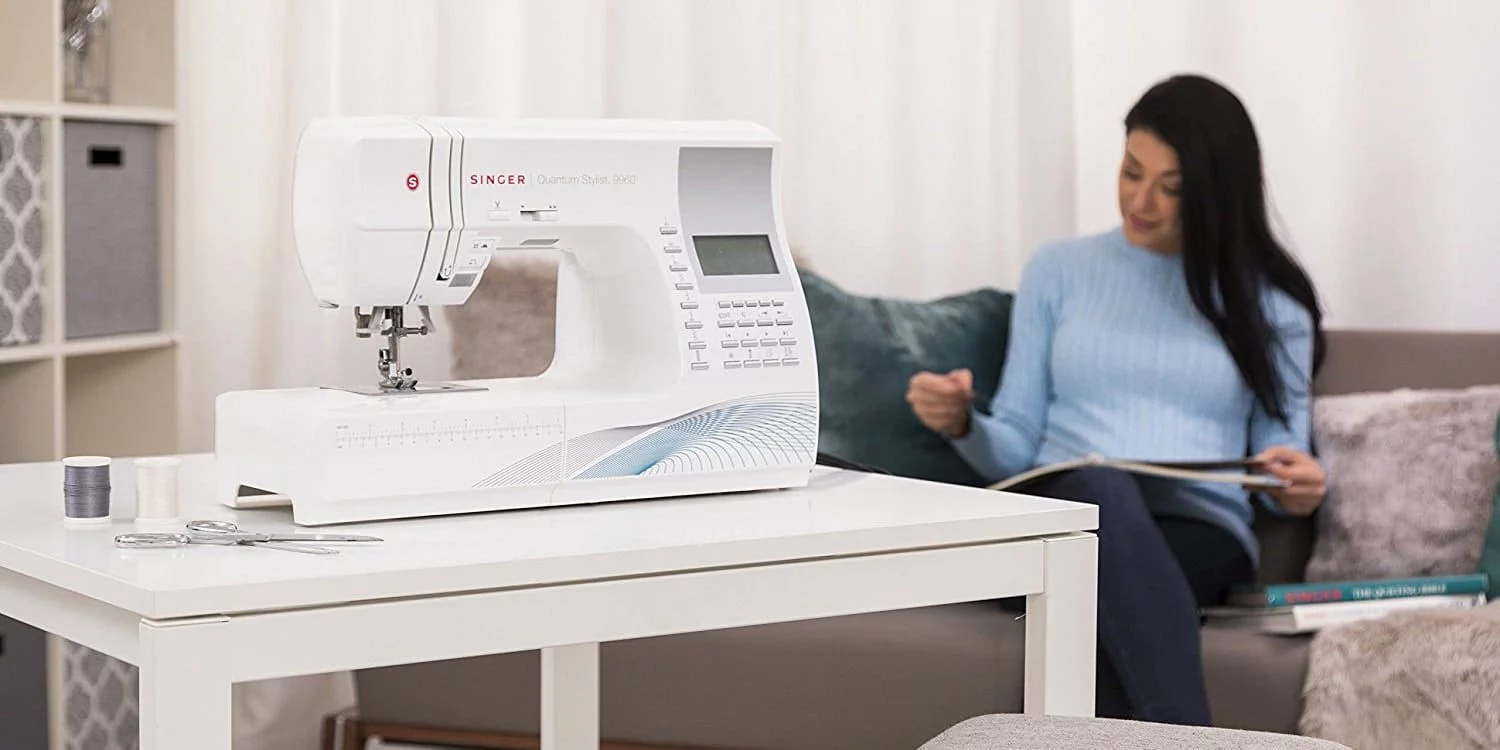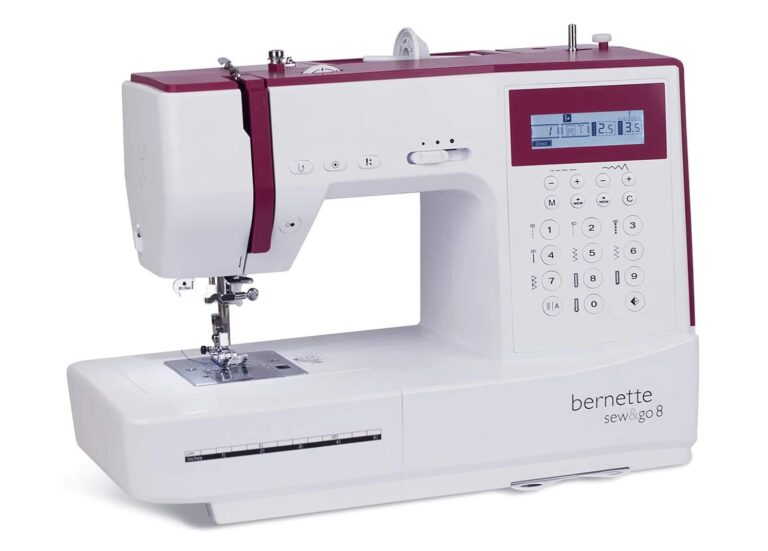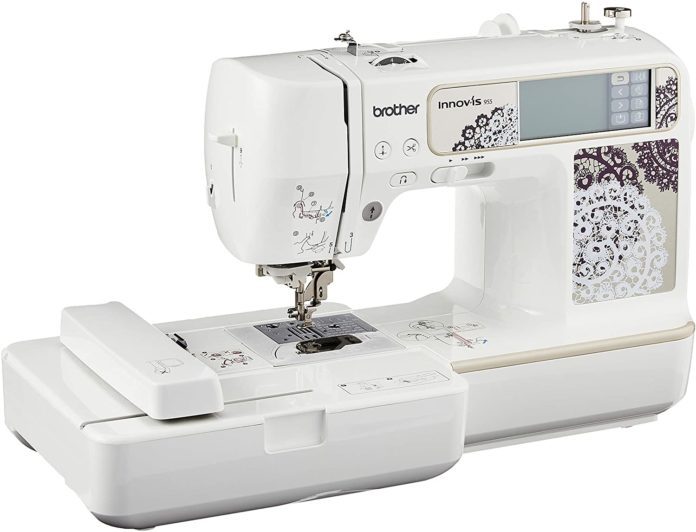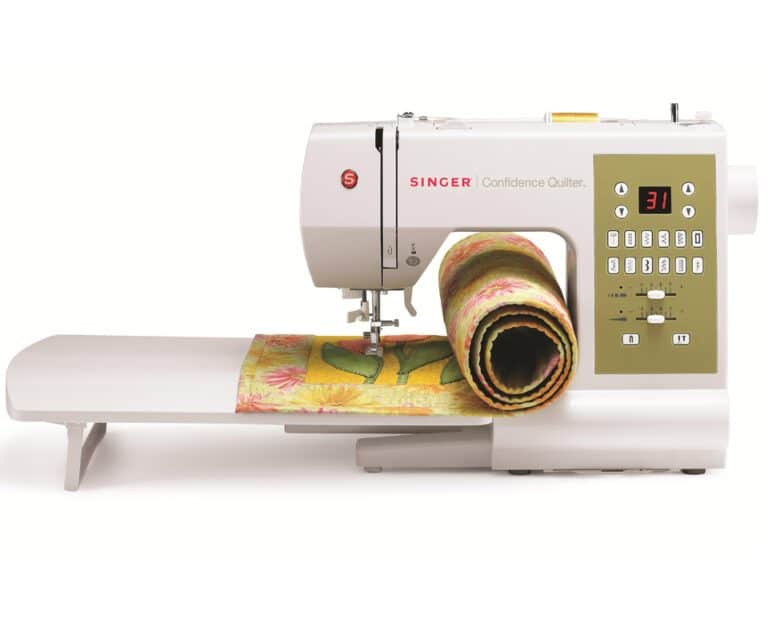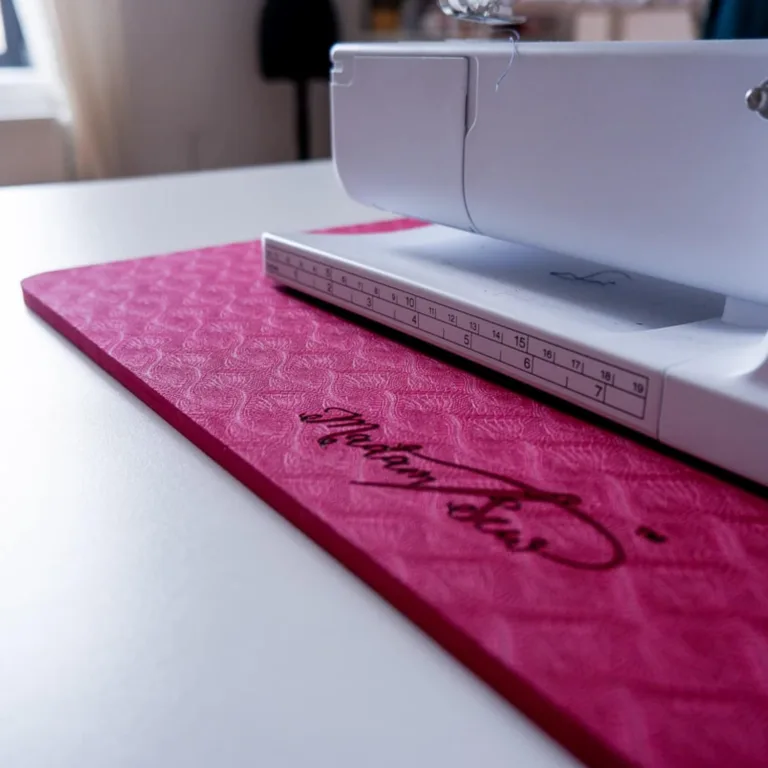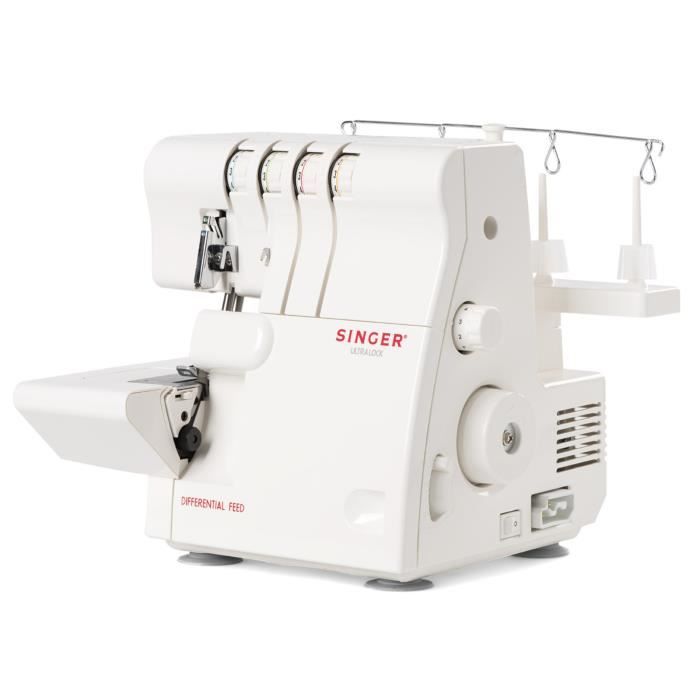Singer sewing machines have been synonymous with quality and prestige since 1851, when Isaac Merrit Singer founded I.M. Singer & Company with Edward C. Clark. Without dwelling on the ups and downs of the company, everyone agrees that Singer sewing machines have gained international fame thanks to their high quality that has never disappointed their customers.
Key points
Mass production of clothing became possible thanks to the industrial revolution. It played a pivotal role in the life of Isaac Merrit Singer, the founder of the company that built the hugely popular Singer sewing machine, known around the world today as a universal symbol of quality, ease of use and prestige in terms of sewing.
There are two main types of Singer sewing machines: mechanical machines and electronic machines, the latter being digital and each having a large number of functions. If you own an older Singer sewing machine, you’ll learn at the end of this guide how to determine the year your machine was made and its current market value.
When buying a Singer sewing machine, you need to consider some key features, such as the different types and number of stitches it can sew and what you want to use for sewing now and in the future. future, as your needs change or your creativity evolves. If you are planning to get into the fashion business, it is better to opt for a sewing machine with many features rather than a basic model. If you know you will only be using the machine for hemming pants and skirts, you can settle for a less complex model because you can rely on the quality of all Singer machines.
The Best Singer Sewing Machines on the Market
Tradition and reliability are two feelings that sum up the “soul” of a Singer sewing machine, an indispensable tool that has been loved and passed down by many families for generations. With that in mind, we bring you a selection of the brand’s best models currently available, including machines suitable for everyone from amateurs to professionals. Why not start a new family tradition by purchasing your next heirloom machine? Take a look at the following choices!
4423 heavy-duty sewing machine with 23 built-in stitches
A real workhorse with a sturdy metal frame and a powerful motor. The 4423 Heavy Duty Sewing Machine is designed for heavy duty projects from denim to canvas, with its powerful motor you have extra high sewing speed to save you time. Create original costumes, sew custom clothing or transform your home with new decorative pillows and curtains. With the SINGER Sewing Assistant app, help is available anytime to teach you how to set it up for different fabrics and techniques.
At just $135, it’s incredible value for those who have a lot of sewing to do and need a machine that can stand up to such use. The Singer 4423 sewing machine has a maximum sewing speed of 1,100 stitches per minute, allowing projects to be sewn quickly. 60% more powerful motor provides more piercing power for thick seams. The 23 built-in stitches, including basic, stretch, decorative and buttonhole stitches, let you sew a variety of projects, such as fashion, home decor, quilts, crafts and more.
best singer sewing machine
Quantum Stylist 9960 Computerized Portable Sewing Machine
If it’s high tech and options you’re looking for, look no further. At $699, the Quantum Stylist 9960 sewing machine is priced higher than our first machine in the bunch but is packed with a host of easy-to-use features to help you achieve your creative dreams. Its 600 built-in stitches include 5 alphanumeric fonts and 13 fully automatic 1-step buttonholes with exclusive buttonhole underlay, mirror imaging and stitch elongation options offer even more creative possibilities. Packed with features, this machine really has it all. The computerized sewing machine, featuring a large LCD display, provides a clear and easy view of sewing functions, including stitch length and width, tension settings, recommended presser foot, sewing position, needle up/down and more!
The Singer Quantum Stylist 9960 Sewing Machine includes an extension table providing a larger work surface, essential for quilting or when working on large projects. It features 2 StayBright LED lights that illuminate the sewing surface for optimal vision. This sewing machine has a ton of other features, like electronic twin needle adjustment, 7-segment feed system, auto-lock stitch function, built-in reverse, horizontal threading, automatic presser foot pressure control and optimal power control.
Simple 3232 Portable Sewing Machine
This little “beginner” sewing machine may only cost $99 but it’s not your grandma’s sewing machine. With many features you wouldn’t expect to find in a starter model or at this price, this sewing machine with an automatic needle threader, quick and easy threading and adjustable stitch length and width, the Setup is simple and frustration-free. With its 32 built-in stitches, automatic 1-step buttonhole and sturdy metal frame, fashion sewing and other creative projects are a breeze.
The Singer Simple 3232 Portable Sewing Machine is the perfect sewing machine for beginning sewers. With adjustable stitch length and width, sewing preparation is quick and easy. Basic features, including 32 built-in stitches, a built-in 1-step buttonhole, and a variety of included accessories, give you just what you need to make sewing creative projects fun and easy. If you need a little help, an online Owner’s Class video is available anytime, and Singer Sewing Company offers a variety of other helpful video tutorials, including on the following topics: Threading, installation of a bobbin and the presser foot.
Singer 7258 100 Stitch Computerized Sewing Machine
If it’s technology you’re looking for but want value for money, the SINGER Stylist 7258 sewing machine lets you select the desired stitch with just the press of a button. Optimal settings for length, width and tension are set automatically and are customizable with adjustable stitch length and width. Volts: 120V. Amps: 0.62. Watts-74. The SINGER Stylist 7258 100 Stitch Computerized Sewing Machine offers great value for money as it comes with lots of free accessories.
Also read: Brother CX70PE (Patchwork Edition): high-performance, robust and easy-to-use sewing machine?
The sewing machine costs just $167 and is programmed for 100 built-in stitches, making it easy for fashion sewing, home and decorative sewing, quilting, crafting, and antique sewing. Thanks to its sturdy metal frame, it has a long service life. The computerized sewing machine with a large LCD display makes it easy and clear to see the stitches you have selected, including stitch length and width. Stitch length and width can be adjusted to suit your projects.
SINGER Brilliance 6180 Portable Sewing Machine
The Singer 6180 Brilliance Computerized Portable Sewing Machine has features that make sewing a breeze, at an affordable price. An automatic needle threader makes threading the needle eye a breeze. The 80 built-in stitches are set optimally every time but are fully adjustable to meet your specific sewing needs. With essential, decorative and stretchy stitches, the singer brilliance portable sewing machine has the right stitch for every sewing project.
Priced at just $109, the Singer 6180 Brilliance Computerized Portable Sewing Machine has features that make sewing a snap at an affordable price. An automatic needle threader makes threading the needle eye a breeze. Easily convert the sewing machine from a traditional table top to a free arm for sewing sleeves, cuffs and other hard to reach areas. Secure your stitches easily with the conveniently located one-touch auto-return button.
Best singer sewing machine: Everything you need to know
Whether you are a seamstress or a professional tailor or a beginner seamstress, you already know that Singer sewing machines stand out for their durability and quality but did you know that there are different types of Singer sewing machines for different types of seamstresses? There are mechanical machines and electronic machines, for example. You may not know that Singer mechanical machines and electronic machines both run on electricity. We will cover the difference between these two types of machines as well as a lot of other information in this section dedicated to the most common questions asked by users.
What is a Singer Sewing Machine?
A sewing machine, whether Singer brand or another brand, is a small electrical, mechanical or electromechanical device, which makes it possible to assemble pieces of fabric and notions with thread. The first versions of this machine were at the origin of the mass production of clothes, which coincided with the industrial revolution. The very first sewing machine has been attributed to the Englishman Thomas Saint, who made it in 1790.
Although already present on the market, the first sewing machines only used the chain stitch. The evolution of these amazing machines would not have been possible without the intervention of the American Isaac Merrit Singer (1811-1875), who greatly improved the first sewing machines with a device capable of sewing 900 stitches per minute .
Why is the Singer sewing machine so prestigious?
Until 1856, sewing machines were only used in an industrial setting, but Singer turned the situation around by marketing smaller machines for home use. At first, few machines were sold because of their high price (100 euros, at the time!) but the manufacturer quickly managed to reduce this price by half and set up a system allowing people to buy the machines in several times. Since buyers could immediately use the machines to earn money, they were able to make payments on the machines, and many Singer sewing machines ended up in many households in this way.
What categories of Singer sewing machines are available on the market today?
Whether you are looking to buy a Singer machine or another brand, first and foremost you need to understand how sewing machines are generally classified. First of all, just like the machines used by our grandmothers, all sewing machines have a control system that uses a foot pedal. By pressing the pedal, the machine starts to work. Nowadays, all machines are powered by electricity and have various names and characteristics, as you will see in this table:
Types of sewing machines
Which one suits me best?
Straight edges
Also called “stitches”, they sew with one, two or three needles. In the case of the last two, they are also called “flat”. These are the simplest and most common sewing machines found
Overlock
They are used for topstitching and are perfect for stretch fabrics. It is used to join two pieces of textile or to finish the edges. There are several types, suitable for different thicknesses of fabric and are also used at home.
Serger
For knitwear. They sew with one, two or three needles and allow you to make elastic hems in knits, decorative stitches and other effects. The machine sews, overlocks and cuts at the same time.
Eyelet
Specific to the manufacture of eyelets and generally of the industrial type. Used to create professional finishes that cannot be achieved with hand sewing.
Collar
Perfect for making sportswear. Sews up to two or three needles with three or four threads. Produces a discreet point that is often used for professional finishing.
Blind hem
Used to make invisible seams, such as the hems of dresses and formal wear.
Buttonhole
As its name suggests, designed for sewing buttonholes and specific to industrial environments.
embroiderer
Not commonly used but designed to seal pocket openings among other uses. Like most of those mentioned in this table, for industrial use.
Closing
Closes sleeves, shirts and pants, among other garments, with up to three needles.
Elastic
It is usually not found outside of a factory and used for sewing lingerie, for example.
Cutting
Used to cut patterns and as you can imagine these are usually used in factories.
What types of Singer sewing machines are available in the market?
There are a wide variety of Singer sewing machines on the market, all backed by its over 160 years of history and unmatched quality. Depending on your knowledge and experience in the sewing world, there is a Singer sewing machine for everyone. The following list shows the different types:
Electronic: Electronic machines can sew up to 1,300 stitches per minute and are very popular today. They are digitally controlled and you can select the stitch on an LCD screen if the sewing machine is high end. Singer’s catalog includes models such as “Confidence” or “Starlet”. Many experienced sewers make the investment in one of these machines to make their sewing faster and more interesting.
Mechanical: Mechanical Singer sewing machines are electric, contrary to what you might think, and are the ones you usually have at home. The “Simple” and “Tradition” models stand out, among others, but there are a large number of models in the Singer catalog, with different characteristics. For daily sewing or for a beginner, they are very easy to use thanks to their simplicity and reliability.
Embroidery machines: These are sewing machines that allow sewing but can also be used for machine embroidery. These are household devices that have become extremely popular in recent years. Currently they are much more affordable than in the past and in the Singer catalog models like “Legacy” or “Futura” stand out. These machines don’t just sew, but they can really help you develop your creative skills in embroidery and other needlework.
Sergers: As mentioned before, these are great for topstitching stretchy fabrics, especially. They sew and trim excess fabric at the same time, allowing for speed and a professional finish. In Singer’s catalog you will find the 14T970 model, among others. These machines tend to come at a premium and are generally only used by professionals.
Also read: Brother FS40: The best electronic sewing machine?
What is the difference between a mechanical sewing machine and a Singer electronic sewing machine?
Several decades ago, sewing machines came in the form of an immovable piece of furniture, but today they are portable and the pedal is connected to an electrical outlet. For mechanical sewing machines, you must manually select the stitch type, then its length and width. The selection is made by levers or dials, depending on the age of the machine.
Electronic machines, on the other hand, select the stitch, as well as its length and width, using electronic buttons. These are digital machines, with a variety of programs and usually include an LCD screen so you can see your selection. They are more precise and usually include Overlock or even Festoon stitches. They are more efficient but also more expensive.
How can I find out the age of my Singer sewing machine?
Before answering this question, let us tell you that if your Singer sewing machine is from before 1900, it is considered an antique, while if it is newer but not yet the latest version, it could still be considered a valuable “vintage” item. The age and condition of an old machine determine its market value. To determine its age, simply look for the sewing machine’s part number, which can be found in different places on the machine, depending on the model.
We’ll see below where exactly the part numbers are located on the various Singer models, according to brand guidelines:
Manufactured since 1990: Look for the part number near the on/off switch.
Manufactured between 1970 and 1980: You will find the part number on the front panel of machines manufactured in the 70s and 80s.
Made in the 1960s: Sewing machines made in the 1960s usually have the part number on the front panel of the machine, above or below the stitch length controller.
Manufactured before 1960: The part number is on a small plate on the front of the machine. Some older machines, dating from before 1960, do not carry the model number.
Related Posts
Discover relevant articles, tutorials, and tips to improve your skills and explore new techniques.
Stay inspired and connected to our embroidery community.
